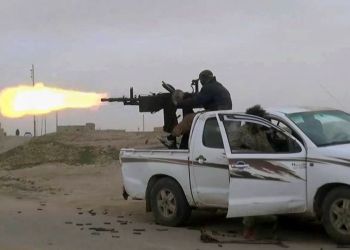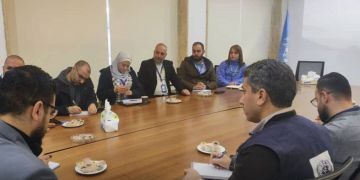This post is also available in:
![]() العربية
العربية
On March 23, 2019, Al-Baghuz, the last Daesh stronghold, was liberated. It was a critical moment in the history of Daesh terrorism, which suppressed people’s breath, and destroyed the region before its fall. It has lost almost everything and has nothing to do other than moving its remnants here and there. With the killing of Al-Baghdadi a year ago, the organization was over, at least it lost the huge image it created in the people’s minds.
The fate of Daesh’s new emir, al-Baghdadi’s successor, will not be better, as he has succeeded Al-Baghdadi on a crumbling organization. He relies on carrying out assassinations and bombings, but still his fate and that of the group or what remains of it is clear to all people, as it is receiving blows during the combing and security operations led by the coalition with its local partners.
Al-Mawla is the emir of Daesh remains
Al-Baghdadi’s successor was unlucky, as he came at a time when everything that Daesh had built had collapsed, and he had only cells here and there without a firm ground to executed his plans, and without the sense of terror that accompanied the rise of Daesh and its control in two terrifying scenes on Raqqa and Mosul.
A report published by Al-Aan channel revealed information about Daesh leader, al-Baghdadi’s successor. His name is Amir Mohammed Saeed Abdul Rahman al-Mawla, an Iraqi national. The report confirmed that he is not Turkmen as promoted before. He is from Mosul from an Arab clan called Al-Salbi, a branch of al-Mawali tribe. He was arrested in 2008 when he was the “general shariah emir” in what was called the “Islamic State of Iraq”, and he was released by the Iraqi authorities later.
One can see that Daesh has lost its ability to move freely as it has no more control on the ground. It only carries out assassinations and bombings, trying to destabilize the region. These acts indicate that the organization is still following the same extremist ideology, and that it has the intention to retaliate against the people of the region, who stood against it.
In the absence of a true popular support and as it has lost power, Daesh’s fall seems imminent, especially after the intensified security operations against its fragile presence.
Restoration and starting over
By following up on what is happening in Deir Ezzor areas, from the liberation until the moment, there are a number of things that can be felt, namely that the organization is no longer able to establish bastions or nests. It is true that it carries out assassinations, but these operations are not organized and are low-qualified, which means that they can be prevented or reduced, especially in case there was cooperation with the tribesmen and the people of the region.
The economic reality, the destroyed infrastructure and the loss of jobs are some of the main reasons that create a gap between the local authorities and the people of the region. Taking care of the region, building infrastructure, providing economic opportunities and preventing injustice will help to get the people of the region cooperating in the issue of security and be the main assistant in it.
People may think that Daesh is now strong or that it can return, but through surveying the people’s opinions in the region and their yearning for a stable life shows that they refuse to be under that dark group again. It brought destruction to the region, sought to instill the principles of refusing the other, and suppressed freedoms.
Fragile organization!
It seems that media is still interested in everything Daesh releases, especially after a long absence from media facades, because the huge media machine that helped it to distribute its terrorism has been broken. Now the counter-media and its opponents are still talking about it, but as a broken organization that seeks to rise again. It seems that al-Mawla, the leader of Daesh remains will reap what Daesh has planted, but what an awful harvest, a bad farmer and a horrible fate that awaits them on the banks of the Euphrates.












